
Amaranth
Red Garnet Amaranth is crisp and tender and has a mild, sweet, earthy flavor. When allowed to grow to full size, it produces seeds that can be used to make flour.
Nutritional Value: Vitamins C, E, K, zinc, manganese, beta-carotene, calcium, iron Protein (lysine), and potassium

Arugula
Arugula is a tender and crisp microgreen with an herbaceous, sweet, and nutty initial flavor transforming into a peppery bite similar to mustard. This sturdy little veggie offers a great complimentary flavor to any dish that you would use lettuce or full-sized arugula. But it is also great atop pan-seared fish, roasted chicken, pork, or a hearty soup. Use them on sandwiches, pizza, pasta, or in green salads.
Nutritional Value: Vitamins A, C, folic acid, and calcium
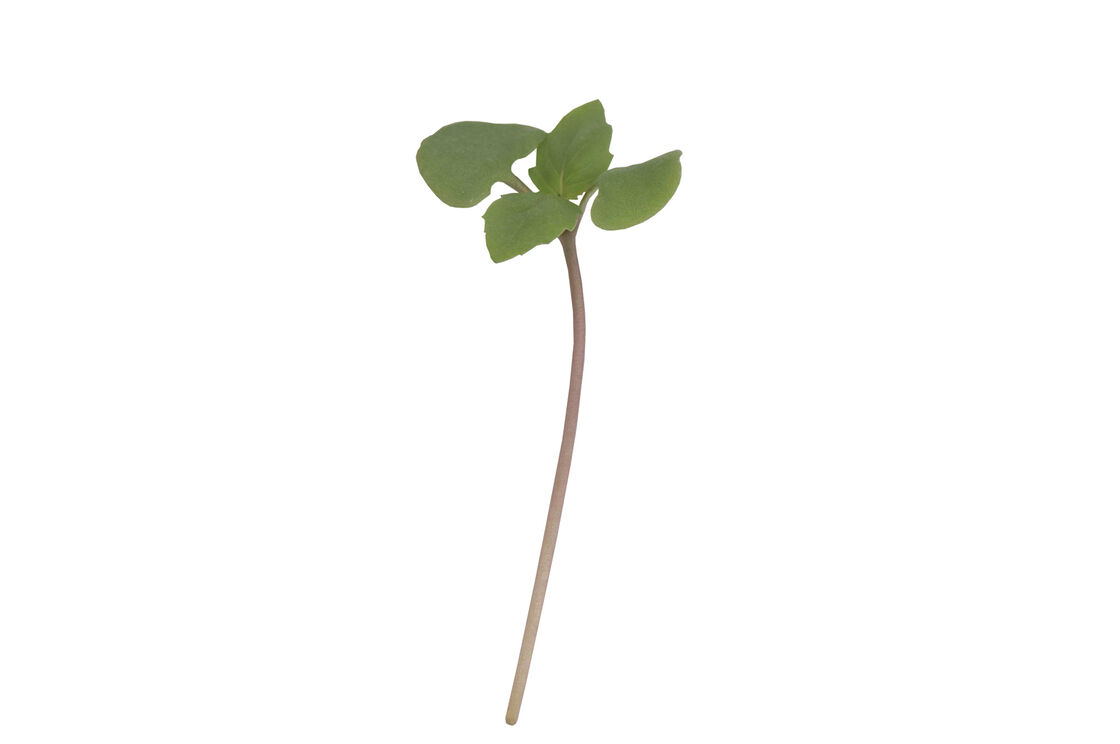
Basil
Basil microgreens have a rich, deep flavor that is crisper and fresher than full grown basil. It is wonderful used as a topper for any Italian, Thai, and Vietnamese dish. It’s also a great substitute for mature basil in pesto.
Nutritional Value: Vitamins A, B6 (pyridoxine), C, E, and K, calcium, phosphorus, iron, zinc, copper, magnesium, and potassium.

Borage
Borage microgreens have a unique cucumber/melon-like flavor. They add a delightful fresh flavor to salads, soups, smoothies, and sandwiches and are often used to make simple syrups.
Nutritional Value: Vitamins B, C, K, and folic acid
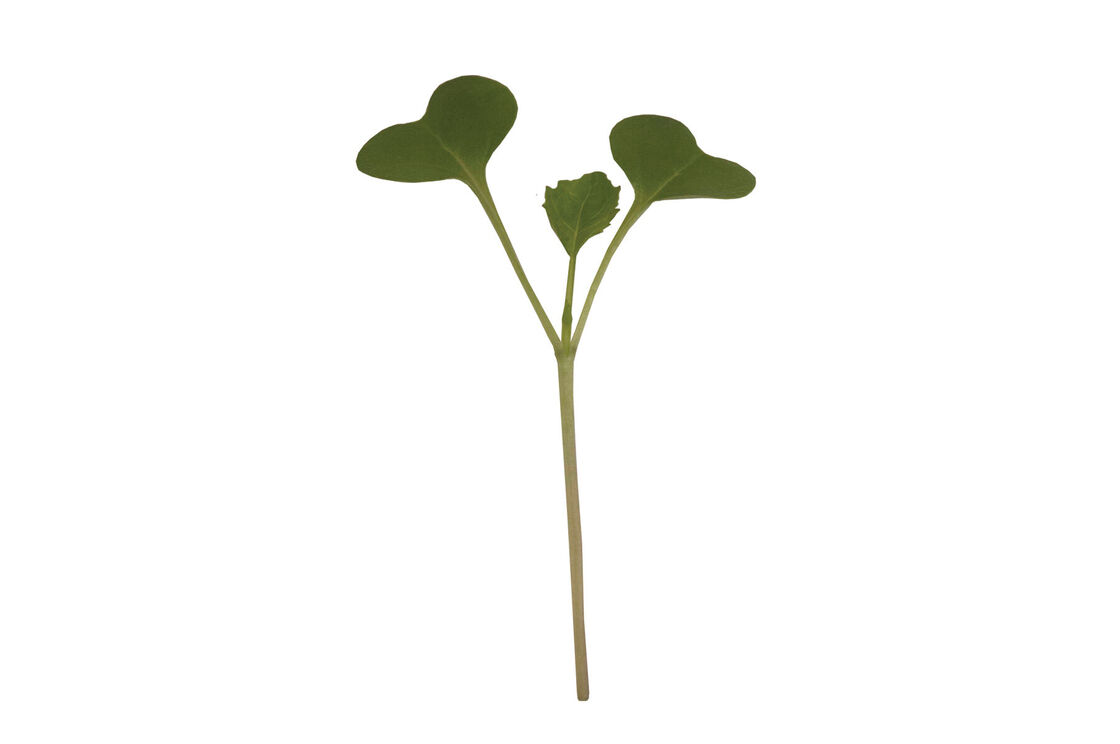
Broccoli
This microgreen has been studied and discussed more than any other because they are a powerhouse. Some nutrition buffs add them to every meal and their smoothies. The seminal microgreens study showed that broccoli microgreens have 40 times more nutrition by weight than the mature plant. This is one amazing superfood!
Nutritional value: Contains vitamins A, B complex, C, E, and K, calcium, magnesium, phosphorous, potassium, iron, zinc, and antioxidants glucoraphanin, sulforaphane, and polyphenols.

Cabbage
Golden and Red Acre cabbage are mild and tender and taste like cabbage, but maybe even better! They make a beautiful meal.
Nutritional value: Contains vitamins C, K, E, and iron. A 2016 study by the American Chemical Society shows that red cabbage microgreens may help reduce ‘bad” cholesterol. It is also known to boost immunity to viruses.
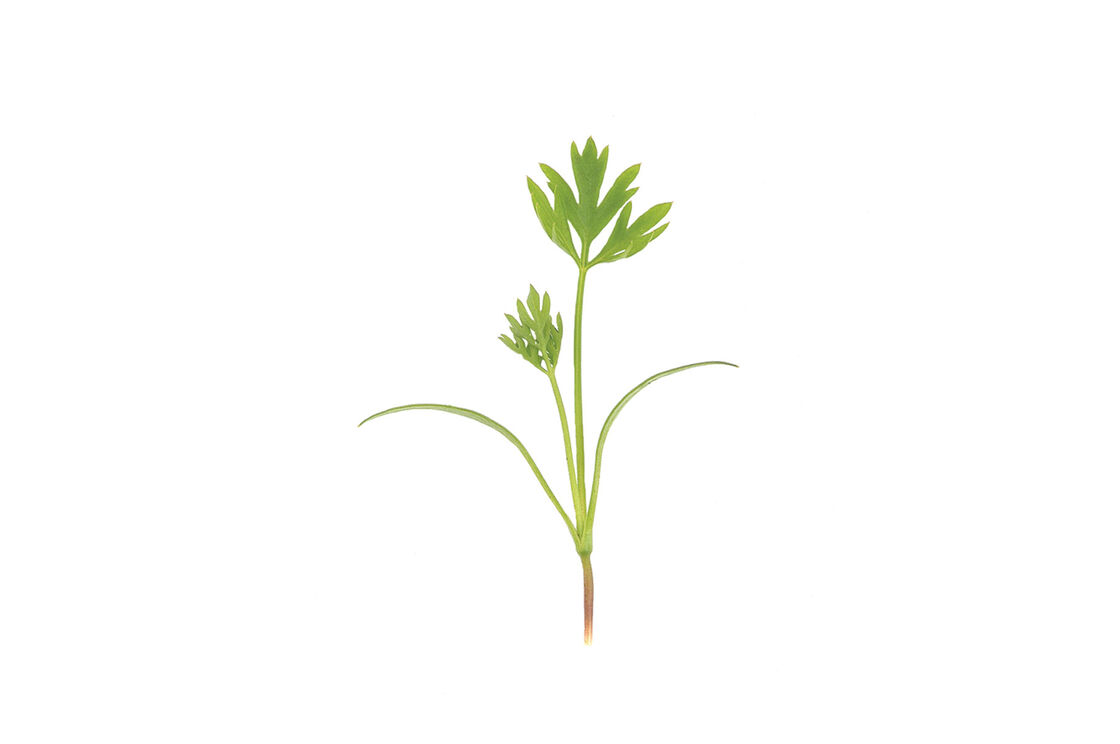
Carrot
Carrot microgreens taste surprising like the root vegetable … at first. The next flavor is similar to parsley or mature carrot tops, if you are familiar with that flavor. Use them is salads as super nutritious carrot and parsley flavors, in meatloaf, soups and sandwiches.
Nutritional value: Contains Vitamin A, antioxidants, carotenoids, and potassium.
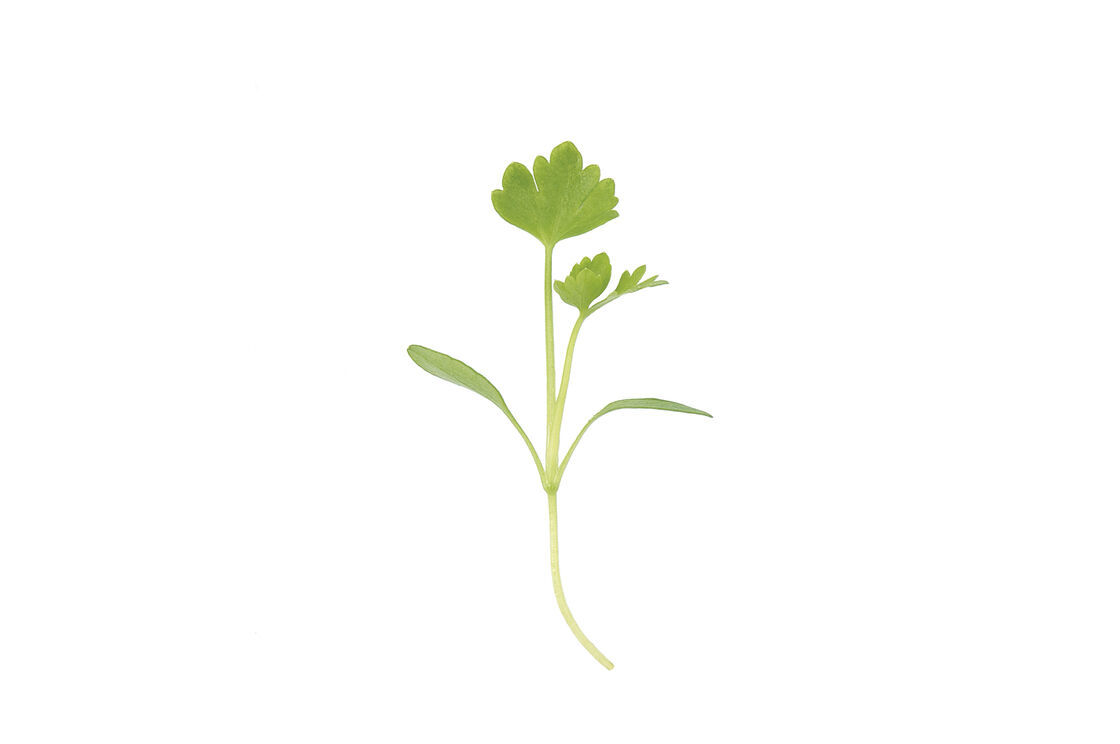
Celery
Celery microgreens are light green with a slightly shiny leaf. They taste like a clean, crisp celery stalk and have a lovely texture that hold up well in hot soups and add a wonderful complementary flavor. They are also great juiced, in smoothies, with poultry and meats, and in numerous recipes.
Nutritional value: Contains vitamins A, B, C, and E, calcium, iron, magnesium, phosphorus, potassium, zinc, and amino acids.

Swiss Chard
Pictured is Ruby Red Swiss Chard. Swiss Chard microgreens taste earthy and fresh, similar to beets. They can add beauty and flavor to many meals.
Nutritional value: Contains concentrated nutrients – vitamins A, B, E, C, K, calcium, magnesium, potassium, iron, zinc, and protein.
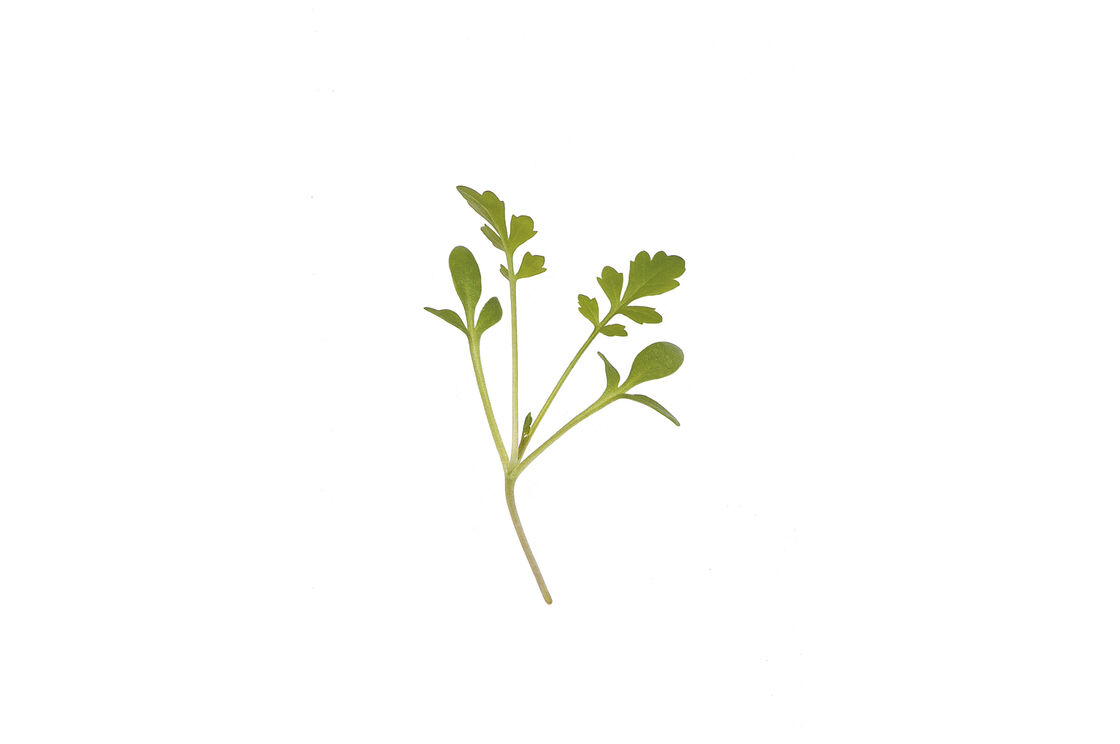
Cress
Cress has a peppery flavor similar to nasturtium. Its unique leaf structure makes it popular for chefs to use in soups, salads, and as a garnish. It is one of the most nutrient-dense greens.
Nutritional Value: Vitamins A, B complex, C, E, calcium, iron, manganese, folate, and potassium
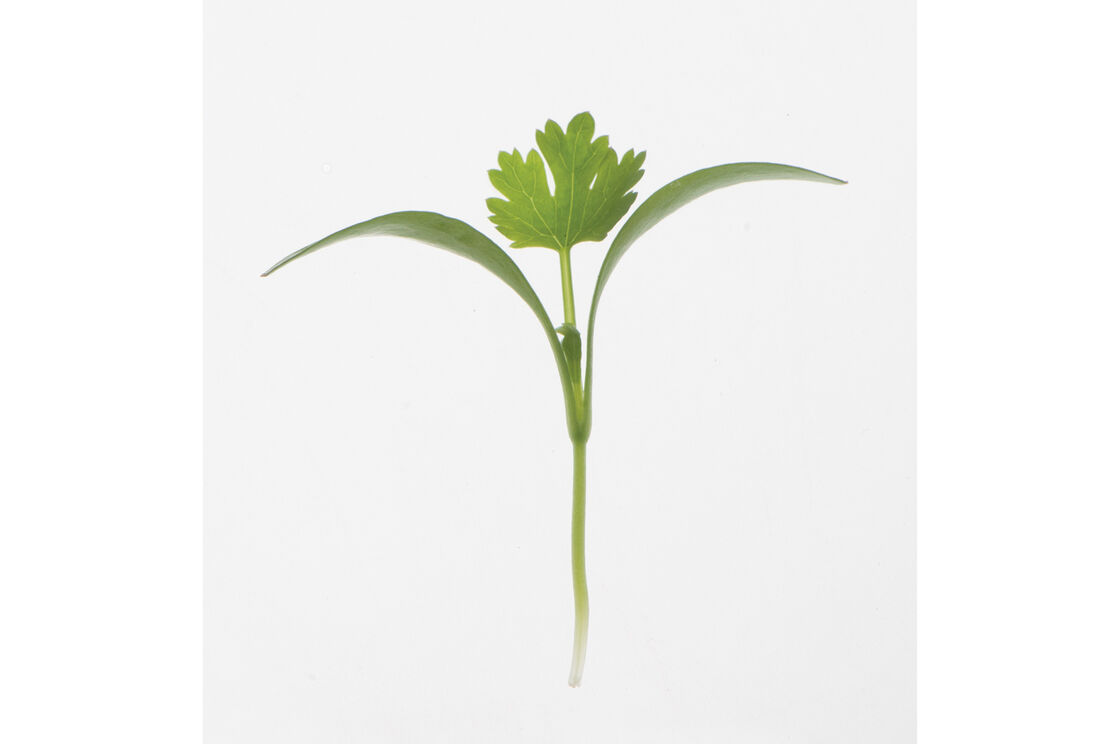
Cilantro
Cilantro tastes like a very “clean” larger cilantro. It is wonderful used any time you would use the adult version. It is known to help with heavy metal detoxification.
Nutritional Value: Vitamins A, B complex, C, E, K, beta-carotene, calcium, potassium, zinc, and phosphorus
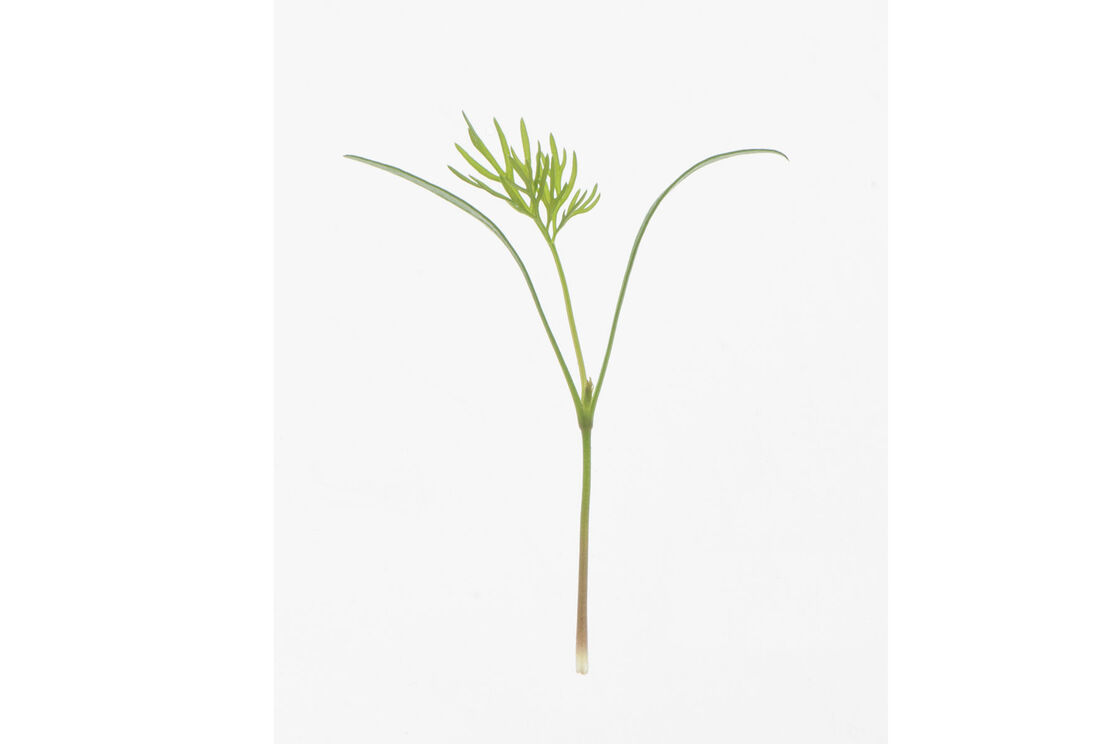
Dill
Dill microgreens are bright green with a feathery leaf. They taste like super fresh dill and have a texture that holds up well on hot dishes. They are delicious used anywhere you might use mature dill such as on fish and in potato, tuna, and egg salads.
Nutritional value: Contains vitamins A and C, iron, manganese, calcium, phosphorus, copper, potassium, and magnesium.
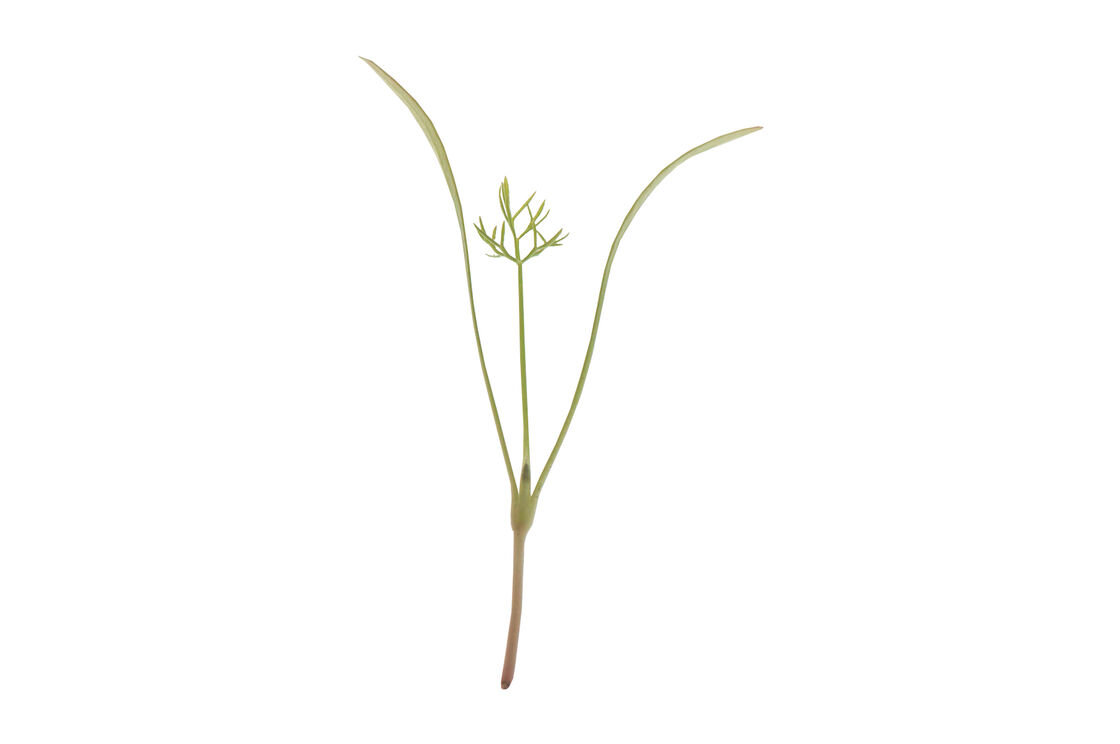
Fennel
Fennel microgreens have delicate, beautiful, fan-like blades. They are poplar with chefs as a garnish because of their height and soft texture. Fennel has a peppery, anise flavor and compliments both savory and sweet dishes. Its lovely flavor is wonderful combined in dips and sauces, salads, sandwiches, or sprinkled over potatoes or pasta. Fennel pairs well with Italian and Indian cuisine, with fruits, cheese, or seafood.
Nutritional value: Vitamins C, E, K, antioxidants, potassium, and fiber
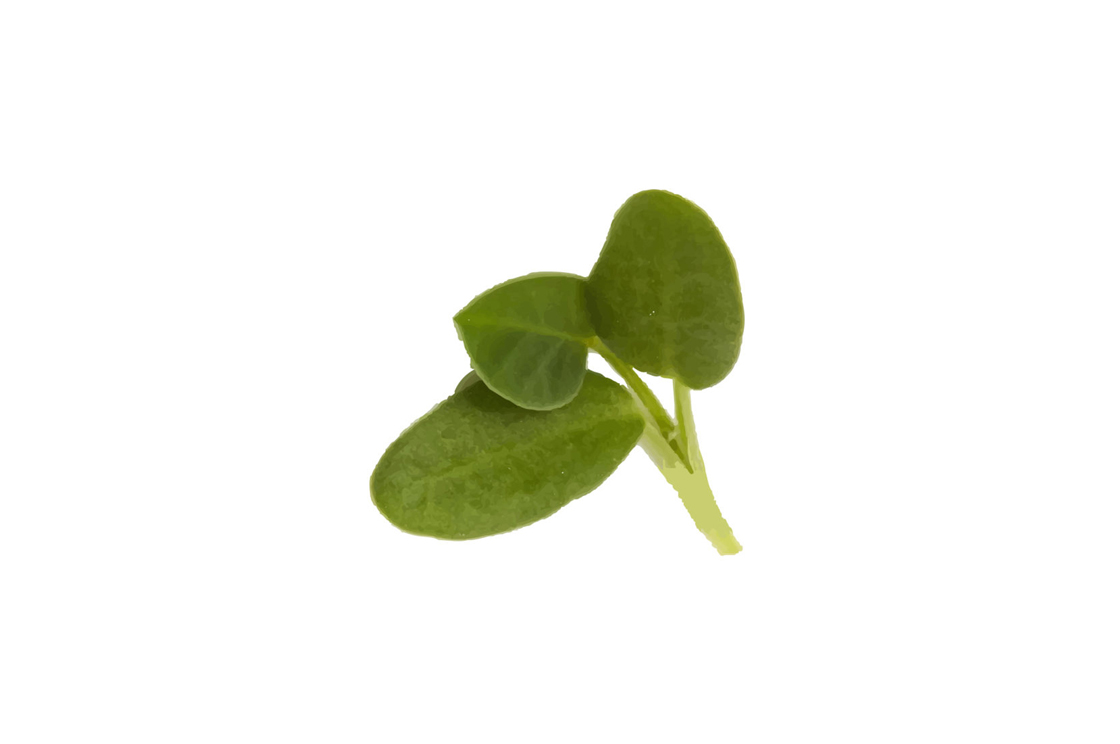
Fenugreek
Fenugreek microgreens are popular in dishes from India. They have a bitter flavor that adds to any curry and many other meals.
Nutritional value: Mature fenugreek contains vitamin K, A and C and calcium, iron, folate, and lower amounts of magnesium, phosphorus, and antioxidants. We were not able to find studies discussing fenugreek as a microgreen.
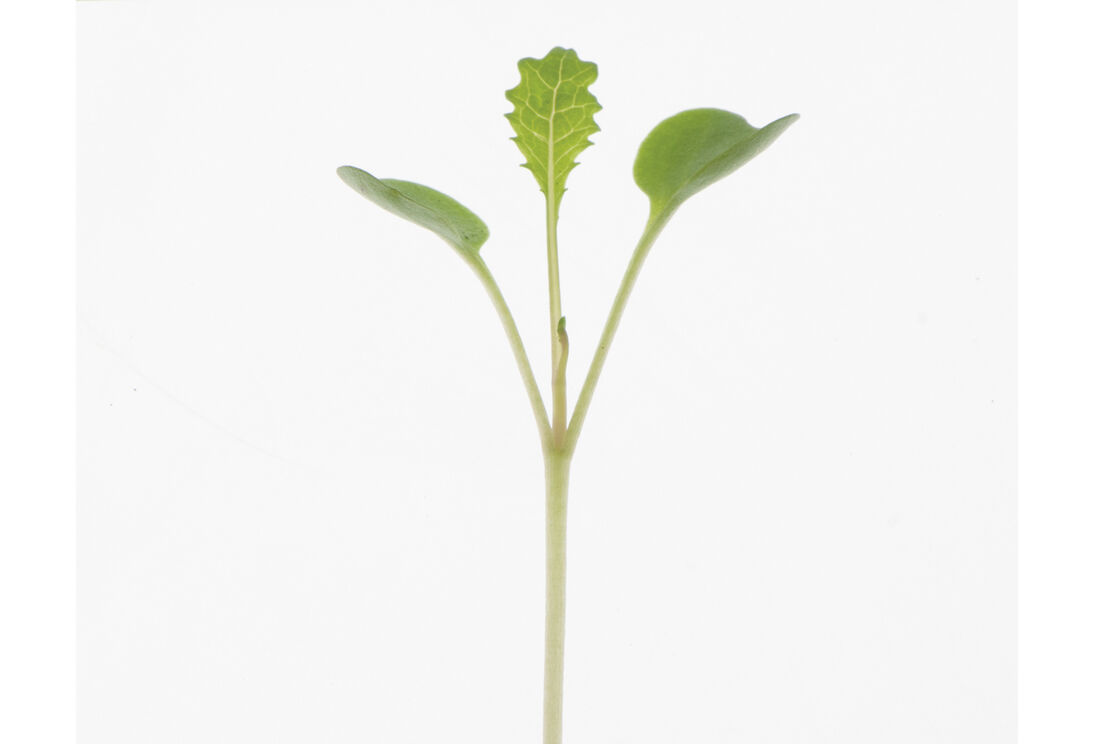
Kale
Kale has a subtly sweet and mild flavor, Kale goes with every meal because they never overpower. When do you eat full grown kale? Use the microgreen instead and have a feast!
Nutritional value: Contains vitamins A, K, and C. Well known as a fitness food for women due to high levels of carotenoid
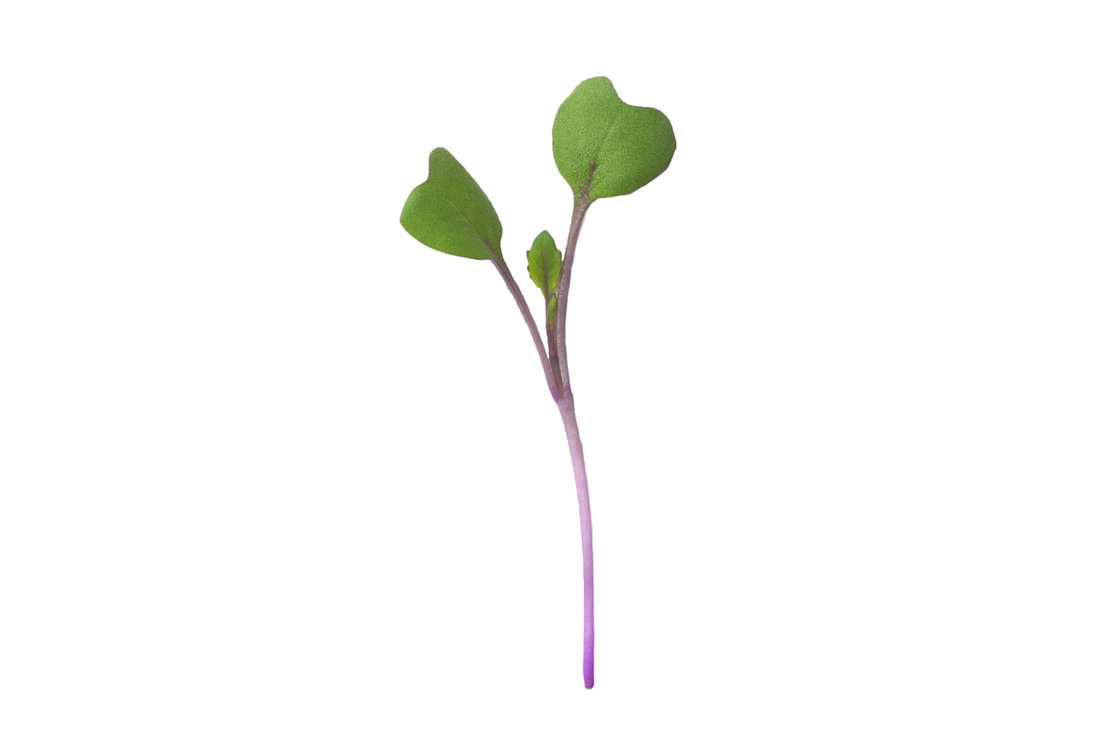
Purple Vienna Kohlrabi
Purple Vienna Kohlrabi microgreens are vibrant, with purple to rose-colored stems and contrasting dark green leaves. Some leaves may be tinged with purple The interesting color combinations and mild, sweet flavor make them a great salad base or addition to any sandwich or slaw.
Nutritional value: Vitamins C, B6, B9 (folate), and B1 (thiamin), potassium, phosphorus, and calcium. They support heart health, fight cancer, lower blood pressure, and decrease the effects of obesity and diabetes.
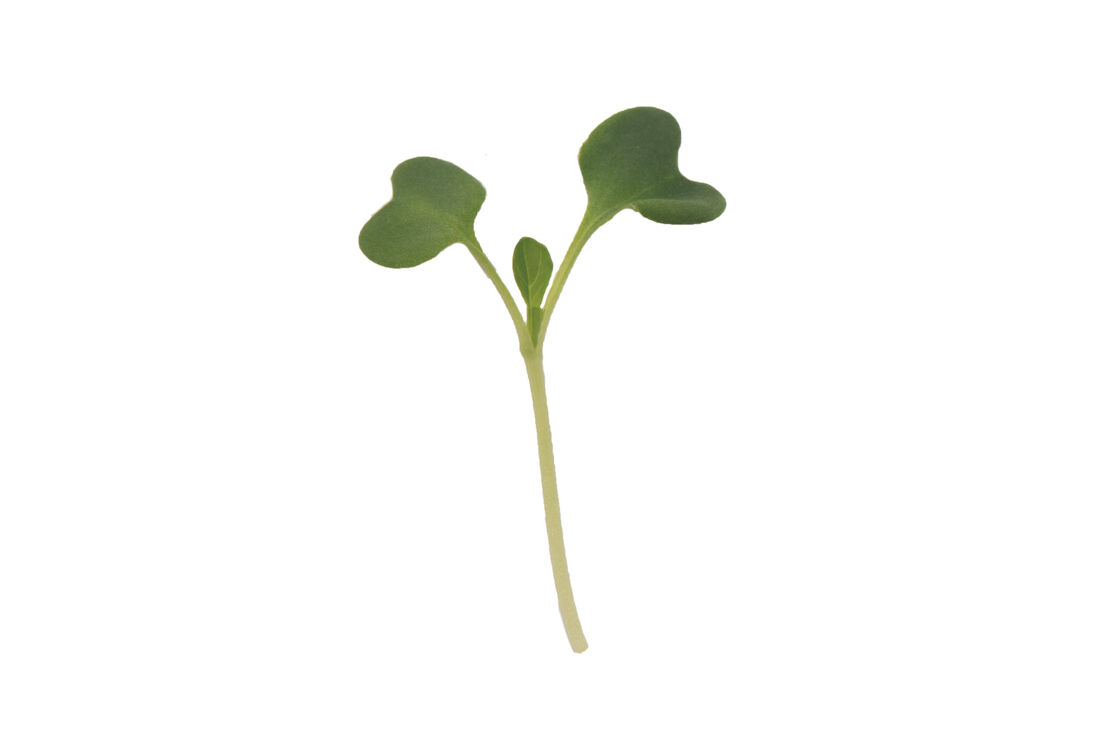
Tatsoi Mustard
Tatsoi Japanese mustard spinach has a white stem with a bright green top and a mild mustard flavor.
Nutritional value: Tatsoi is high in iron and calcium. It is also rich in vitamins C, A, and B9. It is considered a wonder food, particularly for women.

Wasabi Mustard
Wasabi mustard is a beautiful bright green to match its bright flavor. If you have ever cleared your sinuses with wasabi, you know what this microgreen tastes like. It has a kick you won’t quickly forget. Spicy like horseradish, it is an amazing compliment to any Asian meal or anywhere you just want a powerful flavor.
Nutritional value: Vitamins C, A, B9, iron, and calcium
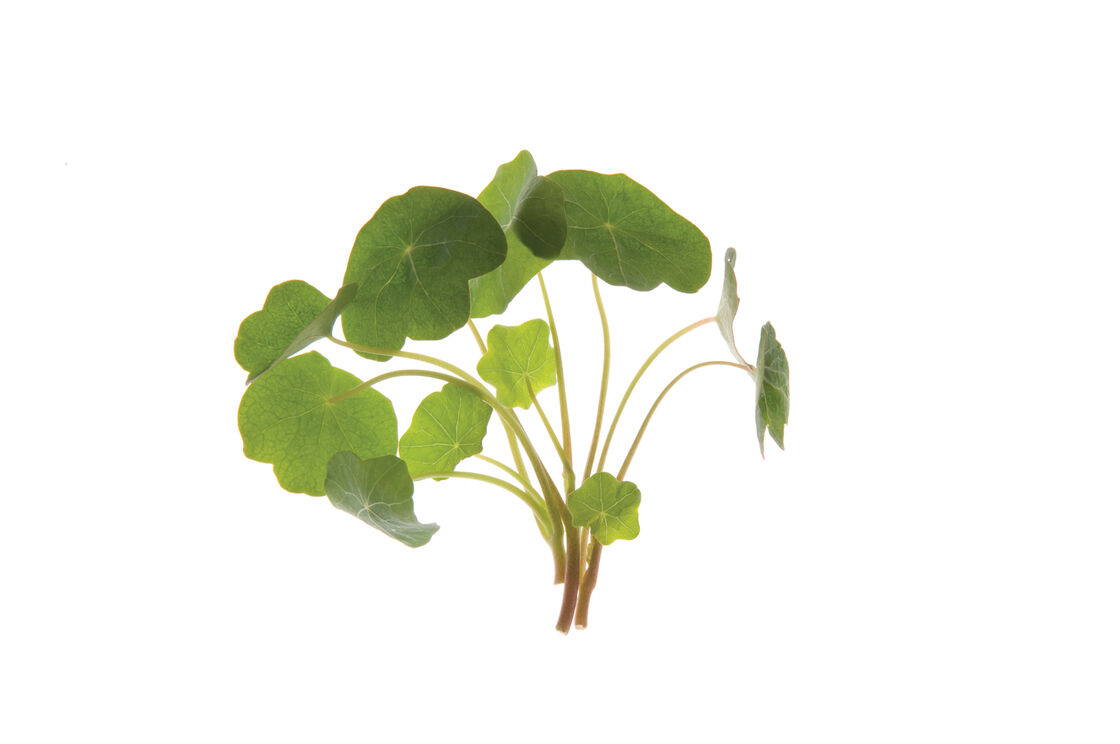
Nasturtium Leaves
Nasturtium leaves initially taste peppery and minty then transition to a slightly sweet flavor. They are lovely with salads, fish, steak, and seafoods.
Nutritional value: Vitamin C, manganese, iron, flavonoids, and beta carotene. Considered a medicinal herb thought to boost immunity. They have antibiotic, antifungal, and antibacterial properties.

Onion
Green Onion microgreens add a flavor similar to chive, scallion, and shallot to your meal. They are easy to use in cooking, as a garnish, on a sandwich, or in a salad. They can replace onions or just add flavorful boost to them.
Nutritional value: Vitamins A, B, C, and E, Calcium, Iron, Magnesium, Niacin, Phosphorus, Zinc, and Potassium.
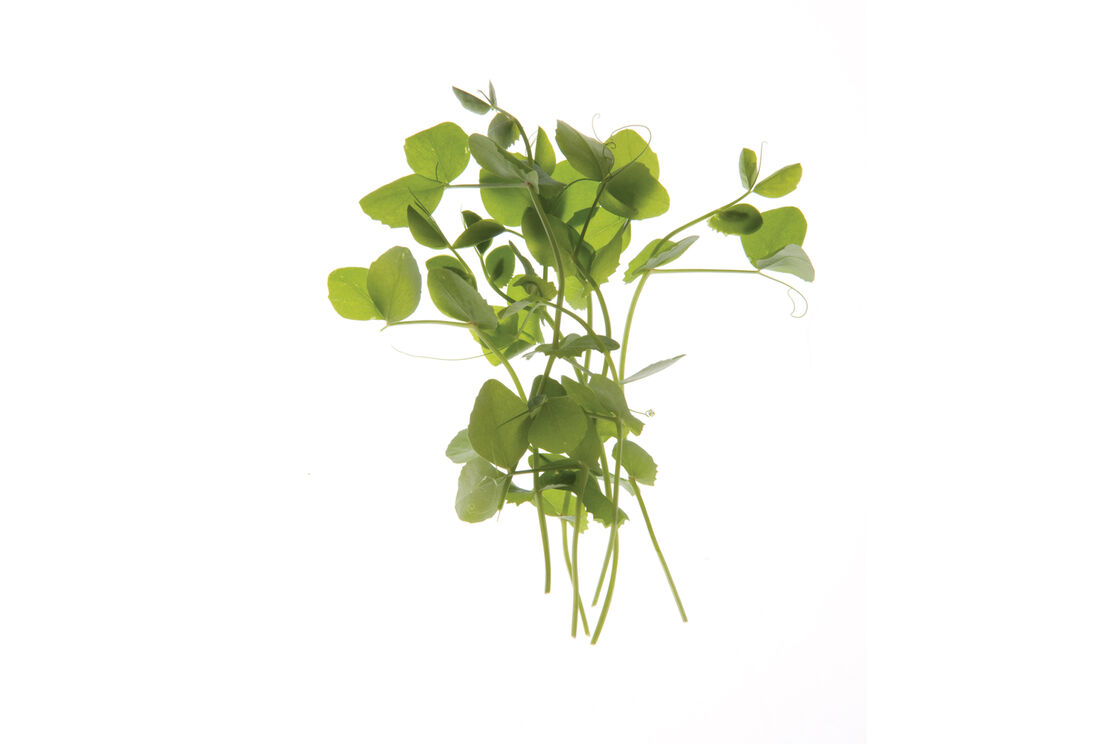
Pea Shoots
For a nutty, slightly sweet flavor, try pea shoots on salads or as a delicate garnish. Kids love these greens!
Nutritional value: Contains vitamins A, B, C, D, and E, calcium, iron, magnesium, niacin, phosphorus, and potassium. Helps protect vision, fight cancer and diabetes. Pea shoots have vitamin D in amounts not found in most plants.
Low levels of Vitamin D have been linked with Coronavirus deaths. With the worldwide Vitamin D deficiency, pea shoots are a little bit of sunshine in your mouth.
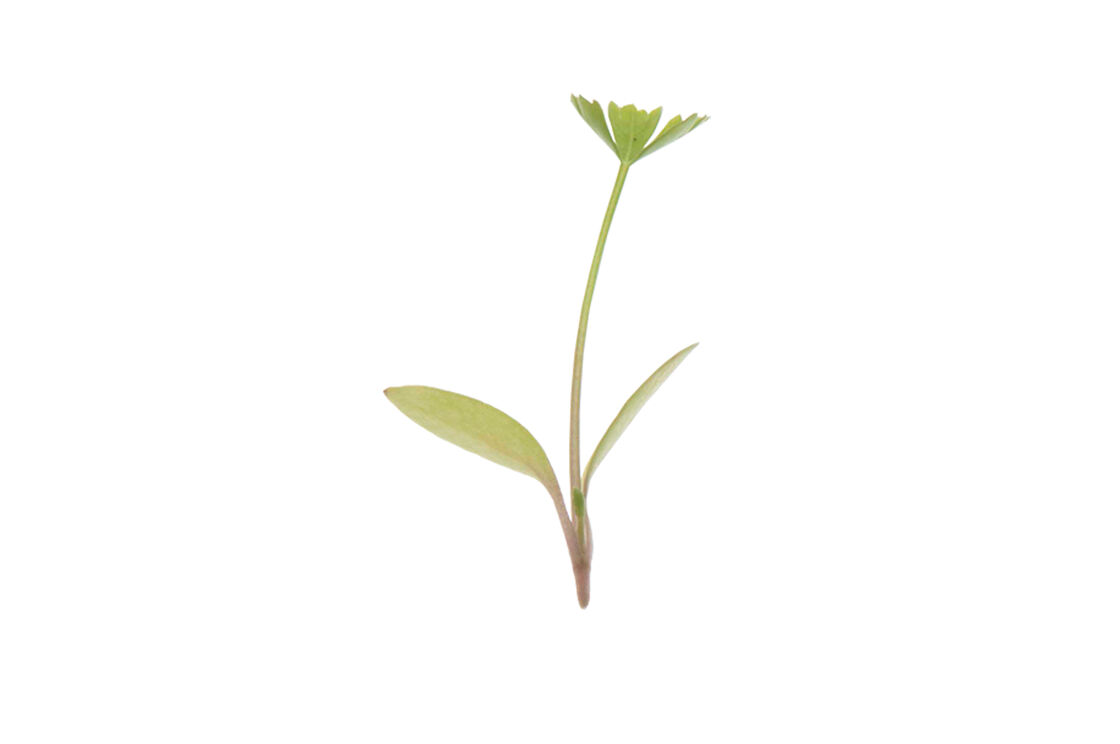
Parsley
Parsley microgreens have a light green, three lobed leaf. It is tender, crisp, and succulent with a fresh, grassy aroma. It has a tangy, floral parsley flavor.
Nutritional value: Contains vitamins A, C, and K, fiber, potassium, magnesium, and calcium.

Popcorn Shoots
Popcorn shoots are sweet and beautiful. They add interest and flavor to salad, chowders, and spring rolls. They are lovely garnishes for meat dishes.
Nutritional value: Contains vitamins A, E, B, and C and calcium, phosphorus, potassium, iron, and magnesium.
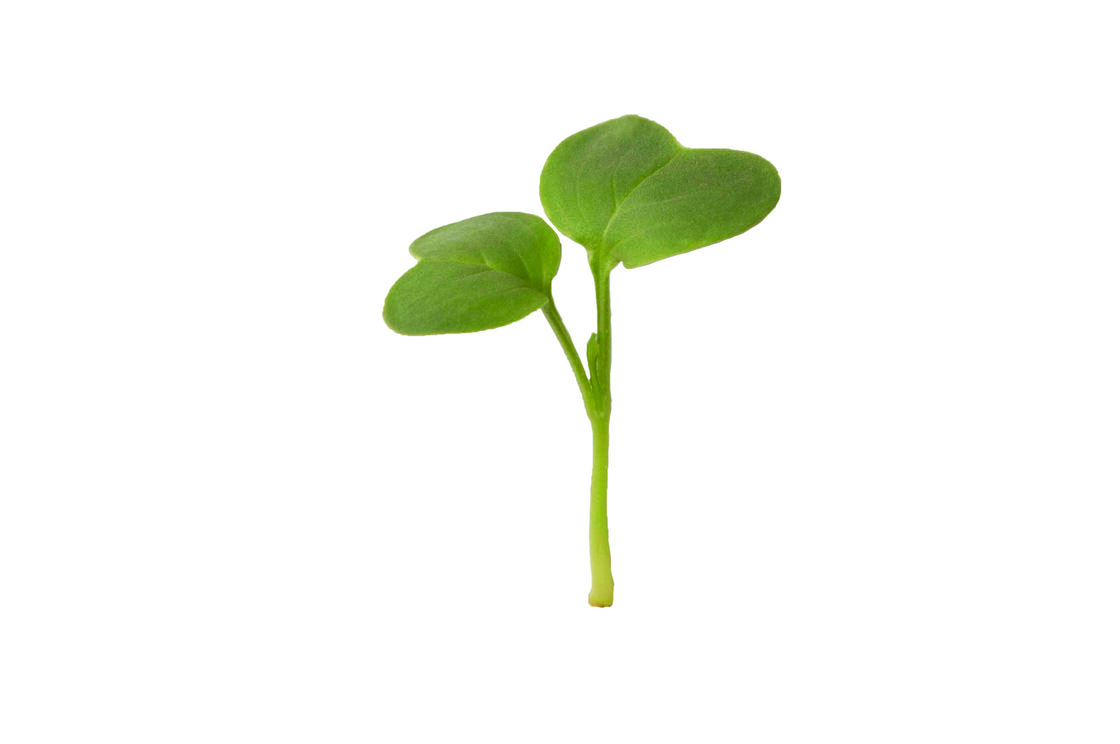
Minowase Daikon Radish
Daikon Microgreens taste super peppery, zesty, and spicy (very similar to the full-grown vegetable). When cooked, they are slightly milder and sweeter, like cooked turnips. Some people say that they feel fuller after eating radish microgreens.
Nutritional value: Contains vitamins A, C, folate, calcium, magnesium, potassium, copper, manganese, and even a high amount of protein. Highly valued for its medicinal value.

Radish
Radish is a staple for microgreen lovers. It has a strong radish flavor packed into its tiny red, purple, and green leaves. It’s a beauty!
Nutritional value: Contains vitamins A, B (including folate), C, E, and K, calcium, iron, magnesium, potassium, phosphorus, and zinc.

Sorrel
Sorrel is so lemony that you can use it in place of lemons or in conjunction with them in some recipes. They are lovely in a salad with a lemon vinaigrette or just as a topper for fish and chicken. Sorrel comes in a beautiful light green (pictured) or green with red veins.
Nutritional value: Contains vitamins A and C, iron, calcium, and magnesium.
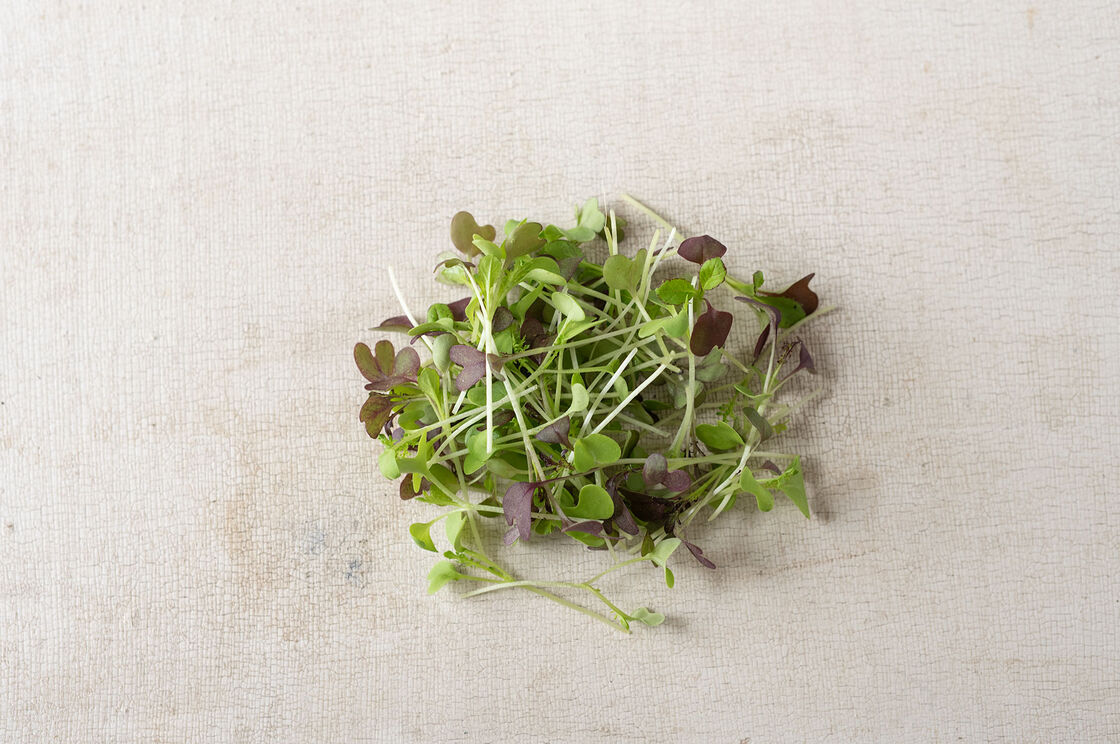
Spicy Asian Mix
This original Roots ‘n Shoots’ mix is a one of our best sellers and consists of Arugula, Tatsoi, and Wasabi. The flavors compliment spring rolls, Pho, sushi, and many other Asian dishes, but also go well with any hearty soup, as toppings for chicken, pork, fish, and beef and enhance any sandwich or salad.
Nutritional value: varies based on amount of each variety. The Tatsoi and Wasabi mustards are considered cancer-fighting microgreens and are important in the fight against malnutrition.

Spicy Salad Mix
Want a great mix for just about any meal? This is it. Includes Arugula, Waltham Broccoli, Blue Scotch Curled Kale, Purple Vienna Kohlrabi, Southern Giant Curled Mustard, and Mammoth Red Rock Cabbage. Yummy!
Nutritional value: varies based on amount of each variety. Broccoli – rich in vitamins A, B, C, E, and K; Calcium, Iron, Magnesium, Phosphorus, Potassium, and Zinc. They are considered a cancer-fighting microgreen and important in the fight against malnutrition.
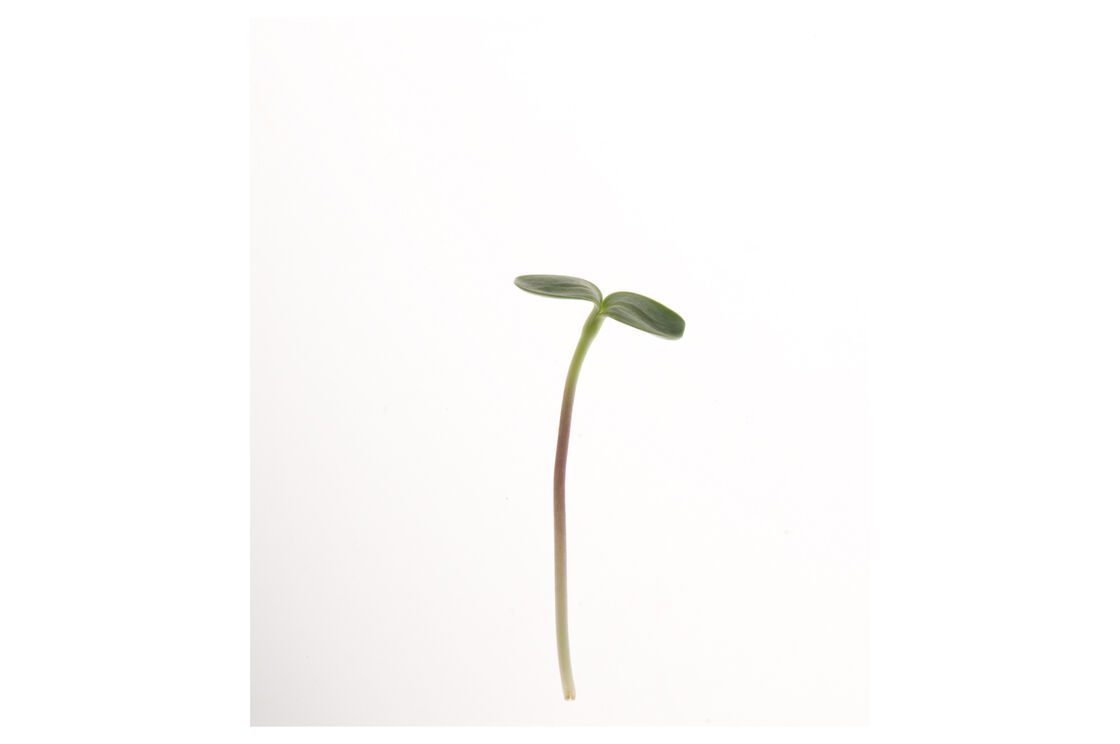
Sunflower Shoots
Sunflower microgreens, or Sunnies, are sweet and provide a lovely crunch. They are great as a snack or can transform a simple salad, sandwich, or wrap into a presentation!
Nutritional value: Vitamins A, B complex (including folate), D, and E, complete protein, calcium, copper, iron, magnesium, potassium, and phosphorus
